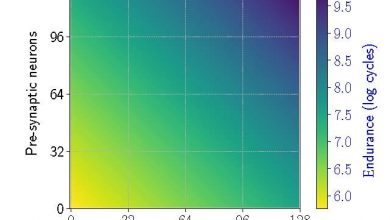Preventing scrollers’ remorse: How to know what users want

A new model can help online media companies figure out what gives users long-term satisfaction—not just the instant gratification of continual scrolling—which may result in less time spent on the platform, but fewer users who quit entirely.
Most online platforms seek to increase the time users spend there, usually by giving them more of the content they have consumed in the past. But this strategy can perpetuate mindless scrolling, and potentially cause regretful users to quit cold turkey.
“There’s a discussion in the research community and in tech companies about how it can be that people use online media a lot, but often come away not valuing the time they spent,” said Jon Kleinberg, the Tisch University Professor of Computer Science in the Cornell Ann S. Bowers College of Computing and Information Science. Kleinberg co-authored a new paper that provides tools to help alleviate this conflict by giving online media companies new ways to figure out what users really want.
“These platforms are designed to watch what you do, and then give you more of what you want,” Kleinberg said. “So on the one hand, these platforms are highly optimized. On the other hand, we often feel like we don’t make good choices when we’re on them. So how do we reconcile these two things?”
This inconsistency may be the result of two known facets of human decision making, system 1 and system 2. System 1 makes fast, almost automatic decisions, while system 2 is slower, reflexive and more logical. With food, system 1 wants the entire bag of chips, while system 2 chooses the salad. Both foods can be part of a balanced diet, but the chips provide gratification in the moment, while the salad provides long-lasting satisfaction. With online media, celebrity posts might trigger system 1, while an educational video might interest system 2.
To understand how these two systems affect online media consumption, Kleinberg worked with former graduate student Manish Raghavan, now at the Massachusetts Institute of Technology, and Sendhil Mullainathan, a behavioral economist at the University of Chicago. They developed a model that simulates how a user with conflicting desires interacts with a platform, then suggests ways to prioritize the value the user receives.
Their paper, “The Challenge of Understanding What Users Want: Inconsistent Preferences and Engagement Optimization,” received the Exemplary Applied Modeling Paper Award at the Association for Computing Machinery Economics and Computation 2022 conference.
The model is needed, the researchers said, because most platforms have heaps of behavioral data—clicks, shares and session lengths—that primarily reflect system 1 choices. Gathering information on system 2 choices, such as through user satisfaction surveys, is much more difficult.
The new model is a starting point for companies to understand what drives user decisions. “While some types of content behave like junk food, others may behave like healthy salads, and teasing apart the difference is key to understanding what users want,” Raghavan said. The model can help companies classify content as chips or salad, and to change the algorithm to prevent users from binging.
Additionally, the model can suggest design changes. For example, platforms can let system 2 step in periodically by adding regular breaks, an option that some social media companies already provide. They can also disable autoplay, which tends to feed system 1’s impulsive decisions.
Now, the authors are working with platform designers to find out which interventions successfully improve user happiness. They also aim to incorporate interactions between users into the model, to see how likes and comments from peers impact the experience.
Ideally, the authors hope this model will shift the conversation away from extending engagement toward increasing the value of the platform for users. “I think many of these companies recognize that, in the long run, making people happier and safer using these platforms is actually beneficial for them,” Raghavan said.
Conclusion: So above is the Preventing scrollers’ remorse: How to know what users want article. Hopefully with this article you can help you in life, always follow and read our good articles on the website: Ngoinhanho101.com





